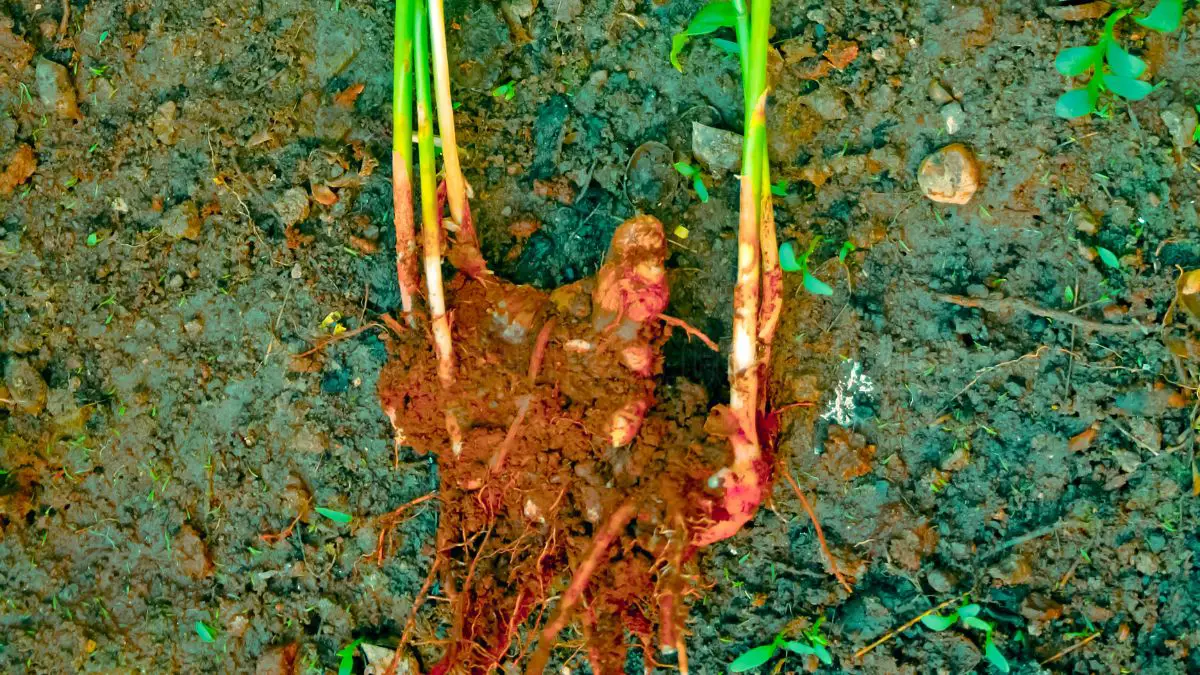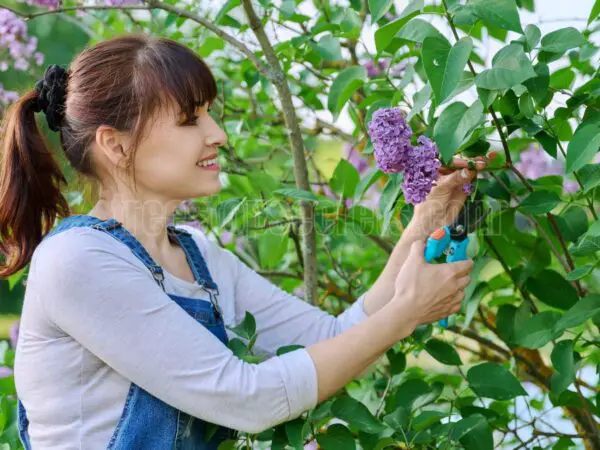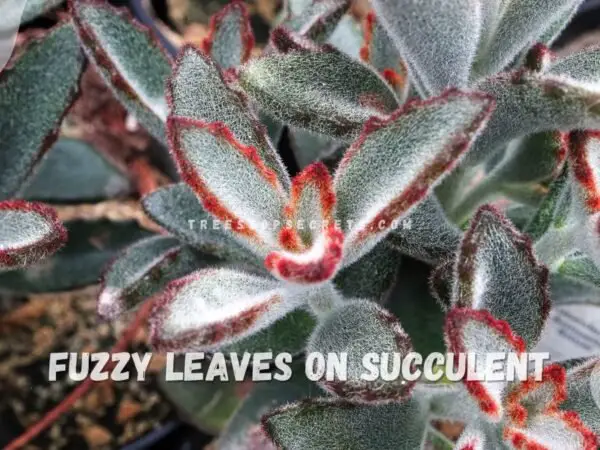To plant ginger, start with fresh ginger rhizomes. You can find them at any grocery store or garden center. Select sections that are tight and juicy with clear sprouting buds or “eyes.
To begin the planting process, soak the rhizomes in water for a few hours. Next, plant them 2 inches deep in loose, well-draining soil. Put them in a warm place with indirect light or partial sun.
Water the soil consistently without overwatering since ginger likes to keep things just a bit moist. As the plants develop, they will grow to a height of 2–3 feet.
Plan on harvesting your ginger about 8 to 10 months from planting. This post will walk you through the process of growing ginger in your home garden from start to finish.
Key Takeaways
- Ginger grows best in tropical, warm, humid climates. It grows best in tropical and subtropical climates, in well-draining, nutrient-rich soil with a pH of 6.1 to 6.5.
- Soil preparation Before you plant ginger, add ample garden compost to the soil for nourishment. Then, dig deep, wide holes spaced at least 3 feet apart to allow for healthy growth and drainage.
- Plant ginger root pieces with the eyes facing up, 2 inches deep. Space them 6–8 inches apart to allow for air circulation throughout the plant, as well as the growth of roots.
- Plant ginger indoors in pots with drainage holes. Put them in a warm area with bright indirect light, maintaining temperatures between 70°F and 85°F.
- Keep the soil evenly moist by watering frequently. You can supplement with natural fertilizers to ensure your ginger plants have the nutrients they need to flourish.
- Harvest ginger when leaves yellow and growth slows, ensuring proper tools are used to avoid damaging rhizomes, and store harvested ginger in a cool, dry place for longevity.
Optimal Conditions for Ginger Growth
Providing optimal conditions for ginger to thrive will set you up for the best possible harvest. Ginger grows best in consistently warm, humid conditions. It especially thrives in tropical and subtropical climates, where temperatures never drop below 75°F (24°C). Ginger requires a long growing season of around ten months. This is a tropical plant that thrives in heat and humidity.
1. What Climate and Soil Conditions Are Best?
Climate zones Ideally, ginger production should be undertaken in areas with consistently warm temperatures and humidity. Sandy or loamy soils are especially ideal, as they provide excellent drainage alongside the moisture ginger needs to thrive.
Soil that is high in organic matter promotes vigorous growth, so it’s essential to amend your garden soil prior to planting.
2. How to Prepare Your Garden or Soil?
To prepare the garden, incorporate compost and organic matter into the soil to enhance its nutrient profile. Dig planting holes at least 2 inches deep so roots can grow freely.
Just be sure that these holes are about 6 to 8 inches apart so that you have good airflow between the plants.
3. What Planting Techniques and Spacing to Use?
Plant the ginger rhizomes with the little nodules pointing up. Ensure they are at least 2 inches deep and spaced properly.
This spacing allows for healthy growth and airflow to develop, which is key in disease prevention.
4. How Do Ginger Varieties Perform in Different Climates?
Ginger varieties perform differently in various temperature ranges. Those varieties that are adapted for these cooler climates will need tailored cultivation, while those varieties that flourish in the warmer climates will be more vigorous.
Growing Ginger Indoors
Growing ginger indoors is a fun and fruitful endeavor, bringing a taste of fresh ginger to your kitchen every season. Key to success are proper container choices, lighting conditions, humidity control, and temperature control.
1. How to Select the Right Container?
Choosing the right container matters. Choose containers with drainage holes to avoid making the soil too saturated, which may cause root rot.
A depth of at least 12 inches is recommended since ginger roots can get quite large. A shallow and wide container is best, since that allows for the wide, spreading growth of ginger.
2. What Light Requirements Are Necessary?
Ginger does best in bright, indirect light. Placing plants next to east or south-facing windows will ensure they receive adequate light.
If your location doesn’t provide enough natural light, grow lights are a great way to cover this necessity and keep your ginger growing strong.
3. How to Control Temperature for Indoor Growth?
Consistently high temperatures between 70°F and 85°F are ideal for ginger to thrive indoors. Keeping your plants warm all the time is very important.
Avoid placing them in drafts or near heating vents to avoid dangerous temperature fluctuations that could prevent them from thriving.
Encourage sprouting by soaking ginger rhizomes for one to two weeks before potting them. The introduction of hydrogen peroxide will increase oxygen availability.
Ginger generally needs around three weeks before you see any visible buds, and a full growth cycle is around 8-10 months. Consistent monitoring of moisture levels is key, with the soil needing to be kept just moist, never waterlogged.
Nutrient and Water Management
In addition, effective nutrient and water management is hugely important in successful ginger production. Having a routine watering schedule will help keep your soil consistently moist, not muddy. Ginger grows best in a warm, humid environment with regular moisture, especially when the leaves and stems are developing.
To ensure your seedlings thrive, consider utilizing a drip irrigation system to deliver moisture straight to the roots. Change how often you water with the seasons and based on your home’s humidity.
1. What Nutrient Requirements Should Be Met?
Ginger is a high nutrient demanding crop requiring high levels of nitrogen, phosphorus and potassium for vigorous growth. Regularly monitoring soil nutrient levels ensures soil conditions remain in the optimum zone.
Organic fertilizers, like liquid seaweed or fish emulsion, can help, especially during key growth stages. Adding compost to the soil improves overall fertility and nutrient content.
2. How to Optimize Irrigation Methods?
Drip irrigation systems, which can easily be adopted on many small farms, allow for regular moisture without excess water runoff or evaporation. Seasonal changes in watering schedule will need to be made as ginger plants grow best in a long, warm growing season of at least ten months.
Just remember, soil temperatures need to be above 75°F (24°C) for direct seeding.
3. What Organic Practices Enhance Growth?
Adding organic matter and employing mulching practices would have a wonderful impact on ginger. A 2-inch layer of organic mulch will conserve moisture and keep weeds down.
Companion planting can further improve growth by using plants to avoid ginger-pests through natural pest control methods.
Pest and Disease Management
Effective pest and disease management is essential for growing healthy ginger plants. Recognizing common threats, such as aphids and spider mites, and understanding the diseases that can afflict ginger, like fusarium yellows, is essential for maintaining plant vigor. Preventive measures can go a long way in helping to prevent the impact of these issues.
1. How to Identify Common Pests and Diseases?
The best first step you can take to manage them is to identify symptoms as early as possible. For pests, look for curled leaves, honeydew, or insects on the leaves.
Examples of diseases include yellowing of leaves and/or growth, or other signs such as wilting, blights, or cankers. As you try to recognize them all, developing a checklist of these symptoms can help you identify them quickly.
This is best done through regular inspection of plants, at least once a week, to catch things early and that’s key in stopping an infestation or disease. Looking at the root system to see if there are any indications of rot or dark discoloration can be key indicators.
2. What Effective Management Strategies Exist?
Implementing management strategies should include proactive and reactive approaches. Organic pesticides allow you to kill unwanted bugs while doing the least possible damage to the plant and the surrounding ecosystem.
Neem oil, for example, is an effective aphid repellent that won’t leave toxic residues. Crop rotation is a logical method to stop soil-borne diseases from becoming entrenched in the earth.
Soil health is enhanced by alternating ginger with other crops, thus reducing the risk of recurring diseases.
Harvesting and Post-Harvest Techniques
Harvesting ginger is an important step that must be timed and done well to ensure maximum quality and yield. The most important part of harvesting ginger is knowing when to do so. Proper treatment of the roots post-harvest is crucial for flavorful and viable roots to plant in the future.
1. What Are Key Indicators of Ginger Maturity?
Harvesting ginger at the right time requires you to check for signs of declining health. One easy sign to look for is a yellowing (senescence) of the ginger leaves, often seen about 8-10 months after planting.
A reduction in growth indicates that the rhizomes are mature. The firmness of the rhizomes is important. The outer skin of mature rhizomes becomes thicker and harder and the rhizomes themselves are larger, indicating they are ready to be harvested.
2. How to Harvest Ginger Properly?
When it comes to harvesting ginger, proper tools are essential. Use a spade or fork to loosen the soil around the base of the plant. This process reduces the likelihood of harming the rhizomes.
After you dig it up, cut off any shoots and wash the ginger to get rid of dirt. Thorough cleanings will make the crop look more appealing and reduce the chance of mold developing while in storage.
3. What Post-Harvest Techniques Should Be Employed?
Proper post-harvest production practices are essential for maintaining ginger’s high quality. Keeping them in a cool, dry place out of direct sunlight will help them last longer too.
If you want to store ginger for a longer time and not worry about refreshing it, refrigeration is a good option. It is prudent to set aside a portion of ginger for replanting, creating a cycle that allows for future cultivation.
Companion Planting Strategies
Companion planting increases ginger plant growth. Companion planting with ginger is helpful because it acts to support ginger plants with other beneficial plants. In addition to pest control, these companion plants improve soil health. This practice helps ginger thrive and produces a more vibrant garden ecosystem.
1. How Does Companion Planting Influence Productivity?
Some plants are well-known for their ability to enhance soil health, thereby making nutrients more accessible to ginger. For example, legumes such as peas and beans fix nitrogen into the soil, enriching it for ginger to absorb.
Planting cover crops like clover improves soil health and reduces erosion. They help to keep weeds in check. Biodiversity in the garden helps produce a natural balance and an ecosystem.
This natural balance minimizes the risk of pest infestations and diseases, creating a healthier environment for all the plants.
2. What Plants Pair Well with Ginger?
Additionally, ginger grows very well together with other herbs and vegetables, allowing you to maximize the productivity of your garden. As an illustration, planting ginger in close proximity to garlic or onions can ward off unwanted insects because of their powerful odors.
Turmeric and lemongrass are wonderful companions. They both thrive in similar conditions, and they can help to enrich the soil together.
Aromatic herbs such as basil and mint can increase ginger’s growth and quality. Grow them together and they increase pollination while reducing pests.
Conclusion
There are so many reasons to grow ginger that will improve your home and your kitchen. Not only do you grow your own fresh ginger to use in cooking, you beautify your home. Just follow these simple guidelines to set your plants up for success. Monitor your water and nutrients to produce vigorous plants. Monitor for pests and diseases. Keep your plants healthy and vigorous to prevent attacks from pests and pathogens. When it’s time to harvest, sit back and savor the results of your hard work. Use companion planting to increase growth and deter pests.
Follow along on this adventure with ginger and have fun. So, begin your ginger growing journey today, and enjoy the sweet, spicy kick of homegrown ginger! Your future self—and your kitchen—will thank you for it!
Frequently Asked Questions
How long does it take for ginger to grow?
How long does it take for ginger to grow Ginger usually takes about 8 to 10 months to reach maturity. You’ll know when it’s ready when the leaves begin to yellow and dieback.
What is the best time to plant ginger?
The ideal time to plant ginger tubers in Berlin is in spring, after the last frost. This will help give you warm soil for the best growth.
Can I grow ginger in pots?
Can I grow ginger in pots. If you’re growing ginger in a pot, use a wide container that has good drainage, and make sure it gets plenty of sunlight.
How often should I water ginger?
Water ginger consistently, allowing the soil to remain moist but not waterlogged. Once a week should do it, though this will depend on your climate.
What nutrients does ginger need?
Ginger loves loose, fertile soil with lots of organic material. Supplement with compost or a balanced fertilizer to ensure ginger has all of the nutrients it needs.
How can I prevent pests on my ginger plants?
To keep these pests away, examine your plants frequently for early indications of infestation. If there are significant pests, neem oil or insecticidal soap can be effective to manage them.
When should I harvest ginger?
When should I harvest ginger Harvest when the leaves have turned yellow and begun to die back, typically 8 to 10 months after planting. This will guarantee you get the most flavorful and potent ginger possible.
Image Source: Paid image from CANVA




